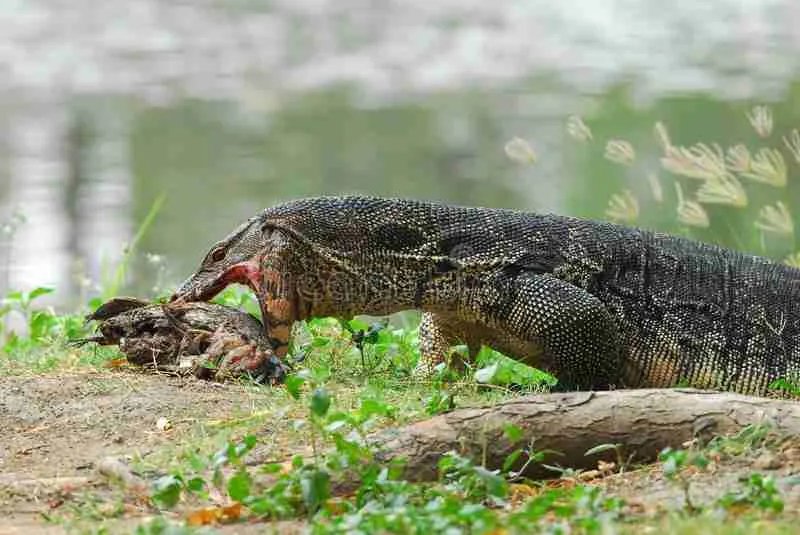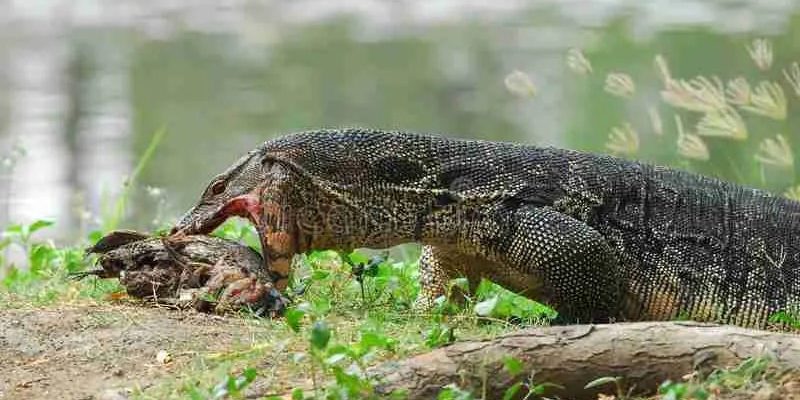
Monitor lizards come in various species, like the famous Komodo dragon and the more common Asian water monitor. Each has its own quirks and dietary preferences, but they all share some common traits in their hunting styles and eating habits. So, grab a cup of coffee and let’s dive into the world of monitor lizards, exploring their diets and how they hunt their prey.
The Monitor Lizard Diet: What Do They Eat?
Monitor lizards are opportunistic eaters, which means they consume whatever is available in their habitat. Their diet primarily consists of:
- Insects: Young lizards often chow down on insects like crickets, beetles, and grasshoppers.
- Small Mammals: As they grow larger, they tend to hunt small mammals, such as rodents and birds.
- Fish and Amphibians: If they’re near water, they’ll go for fish, frogs, and even snakes.
- Eggs: Monitor lizards are known to raid nests for eggs, which provide a rich source of protein.
Here’s the thing: the diet varies by species and habitat. For instance, the Komodo dragon, the largest of all lizards, can tackle prey much larger than itself, including deer. Others, like the savannah monitor, might focus heavily on insects. Regardless, their broad diet helps them thrive in many environments, from rainforests to arid deserts.
How Monitor Lizards Hunt: The Art of the Chase
Monitor lizards are skilled hunters. They employ several techniques to catch their food successfully. One fascinating aspect of their hunting style is their ability to use their keen sense of smell. With a forked tongue, they can pick up scent particles in the air. It’s like having a built-in GPS for detecting prey.
When they’ve locked onto a scent, they can either stalk their prey stealthily or pounce quickly, depending on the situation. Their strong legs help them run fast and climb trees if needed. Honestly, watching a monitor lizard hunt can feel like witnessing a high-stakes game of hide and seek in nature.
Their sharp claws are also crucial during the hunt. These claws help them dig and climb but are also useful for gripping onto slippery surfaces as they pursue prey, like fish. You might be wondering how they catch something as fleet-footed as a bird. Well, monitor lizards can be incredibly patient, waiting for the perfect moment to strike.
Ambush vs. Stalking: Different Hunting Techniques
Monitor lizards generally use two primary hunting techniques: ambushing and stalking.
Ambush Hunting
Some species prefer to stay hidden and wait for their prey to come close. This is referred to as ambush hunting. They often use camouflage to blend into their surroundings, making them nearly invisible. Once a potential meal wanders too close, they strike with blinding speed. It’s like fishing with a line—you wait, you wait, and then reel in your catch!
Stalking
Other monitor lizards are more active hunters and will stalk their prey. They move quietly and strategically, keeping a low profile to avoid detection. This method takes more energy, but it can be effective when they spot something tasty. Their intelligence and patience shine through, showing that these creatures have a hunting style all their own.
The Role of Size and Habitat in Their Diet
Size plays a significant role in what monitor lizards eat. Larger lizards can take down bigger prey, while smaller ones tend to focus on insects and small vertebrates. For example, the Komodo dragon’s size allows it to hunt larger animals effectively. In contrast, a smaller species like the green tree monitor is primarily an insectivore.
Habitat also influences their diet. Those living near water bodies tend to have a more diverse diet that includes fish, while those in arid regions might rely more on insects and small mammals. So, it’s essential to remember that where a monitor lizard lives directly impacts what’s on its menu.
Temperature and Hunting Behavior
Monitor lizards are ectothermic, which means they rely on external heat sources to regulate their body temperature. This characteristic affects their hunting behavior significantly. During cooler parts of the day, you might find them basking in the sun to warm up and increase their energy levels.
Once they’re sufficiently warmed up, they become more active and can hunt effectively. You might see them hunting during early morning or late afternoon when it’s not too hot. If they overheat, they’ll seek shade to cool down, which can limit their hunting opportunities.
Monitor Lizards and Their Role in the Ecosystem
Understanding what monitor lizards eat and how they hunt gives us insight into their vital role in the ecosystem. They help control the populations of various species by preying on small mammals and insects. This predator-prey relationship keeps ecosystems in balance, ensuring that no single species dominates.
Additionally, when monitor lizards consume carrion—like dead animals—they contribute to nutrient recycling in the environment. It’s a neat way that these lizards help maintain the health of their habitats without us even realizing it.
Monitor lizards are more than just fascinating creatures; they’re skilled hunters with diverse diets that reflect their adaptability. From insects to small mammals, their eating habits tell a story about survival in the wild. Understanding how they hunt—not just for their meals but for their place in the ecosystem—adds a layer of respect for these unique reptiles.
So next time you hear about monitor lizards, remember they’re not just lurking around; they’re vital players in nature’s grand design. From their hunting techniques to their dietary choices, there’s a lot more to these reptiles than meets the eye.

